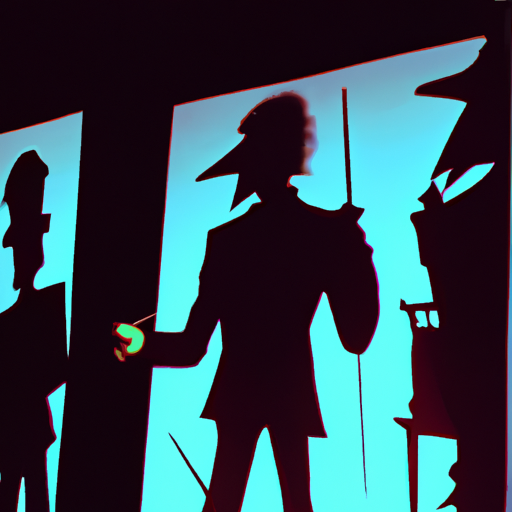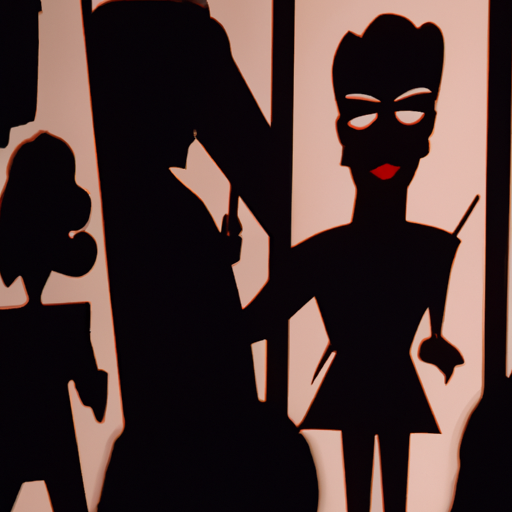
-
Table of Contents
Theatre of Shadows: Puppetry’s Influence on Design

Puppetry has been a form of entertainment and storytelling for centuries, captivating audiences with its unique blend of artistry and performance. While often associated with children’s shows and fairy tales, puppetry has also had a significant impact on the world of design. From set design to character creation, puppetry has influenced various aspects of design, both on and off the stage. In this article, we will explore the ways in which puppetry has shaped and inspired design, and the valuable insights it offers to designers.
The Art of Puppetry
Puppetry is an ancient art form that dates back thousands of years. It has been practiced in different cultures around the world, each with its own unique style and techniques. From shadow puppets in China to marionettes in Europe, puppetry has evolved and adapted to various cultural contexts.
One of the key elements of puppetry is the manipulation of objects to create characters and tell stories. This hands-on approach to storytelling has influenced designers in their approach to creating three-dimensional objects and characters. Puppeteers have a deep understanding of how materials and mechanisms can be used to bring inanimate objects to life, and this knowledge has been applied to the field of design.
Puppetry and Set Design
Set design is an essential aspect of any theatrical production, creating the visual world in which the story unfolds. Puppetry has had a significant influence on set design, particularly in the use of shadows and silhouettes. Shadow puppetry, in particular, relies on the interplay of light and darkness to create stunning visual effects.
Designers have borrowed techniques from shadow puppetry to create dynamic and visually striking sets. By using lighting and different materials, designers can create depth and dimension, evoking a sense of mystery and enchantment. The use of shadows can also add an element of surprise and suspense to a production, engaging the audience in a unique way.
Puppetry and Character Design
Character design is another area where puppetry has made a significant impact. Puppeteers are skilled in creating characters that are expressive and engaging, despite being made of inanimate materials. They understand the importance of body language, facial expressions, and movement in conveying emotions and telling a story.
Designers have drawn inspiration from puppetry in their approach to character design, whether it be for animated films, video games, or even product design. By studying the techniques used by puppeteers, designers can create characters that are visually appealing and relatable to the audience. The use of puppets as a reference point can also help designers in understanding how different materials and textures can be used to bring a character to life.
Puppetry and Interactive Design
Interactive design is an emerging field that focuses on creating experiences that engage and involve the audience. Puppetry, with its emphasis on live performance and audience interaction, has provided valuable insights to designers working in this field.
Puppeteers are skilled in engaging with their audience, whether it be through direct interaction or through the use of puppets as a medium of communication. Designers have taken inspiration from puppetry to create interactive installations, exhibitions, and even digital experiences. By incorporating elements of puppetry, designers can create immersive and engaging experiences that leave a lasting impression on the audience.
Case Study: War Horse
One notable example of puppetry’s influence on design is the acclaimed stage production of “War Horse.” The play, based on the novel by Michael Morpurgo, tells the story of a young boy and his horse during World War I. What sets this production apart is the use of life-sized horse puppets, created by the Handspring Puppet Company.
The puppeteers manipulate the horse puppets, bringing them to life with remarkable realism and emotion. The design of the puppets, with their intricate mechanisms and attention to detail, has captivated audiences around the world. The success of “War Horse” demonstrates how puppetry can elevate a production and create a truly immersive experience for the audience.
The Future of Puppetry in Design
Puppetry continues to evolve and adapt to the changing landscape of design. As technology advances, new possibilities emerge for incorporating puppetry into various design disciplines. Virtual reality, for example, offers exciting opportunities for puppetry in creating immersive digital experiences.
Furthermore, puppetry can also be used as a tool for education and therapy. The use of puppets in teaching and therapy has been proven to be effective in engaging learners and facilitating emotional expression. Designers can explore these applications of puppetry to create innovative and impactful solutions.
Conclusion
Puppetry’s influence on design is undeniable. From set design to character creation, puppetry has shaped and inspired various aspects of design, both on and off the stage. By studying the techniques used by puppeteers, designers can create visually striking sets, engaging characters, and immersive experiences. The art of puppetry offers valuable insights into the manipulation of objects, the use of light and shadow, and the importance of audience engagement. As design continues to evolve, puppetry will undoubtedly play a significant role in shaping the future of design.
